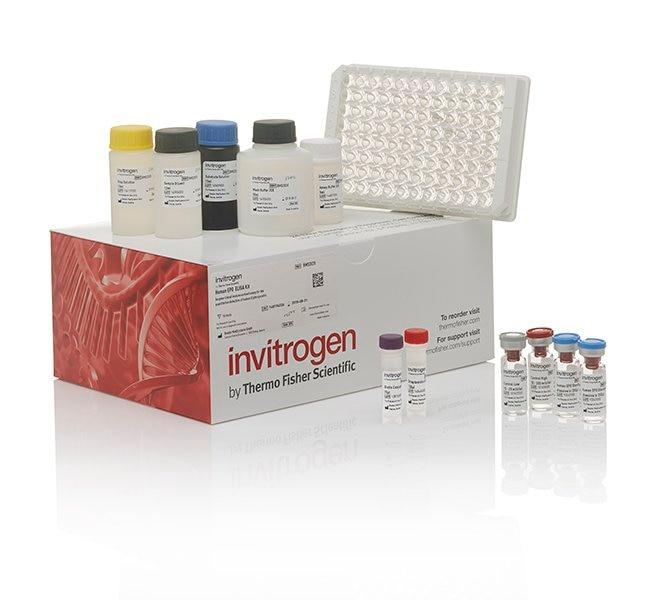Search Thermo Fisher Scientific
Product Specifications
Analytical sensitivity
Assay range
Sample type/volume
Hands-on time
Time-to-result
Homogenous (no wash)
Interassay CV
Intraassay CV
Instrument
Product size
Contents
Standard
Assay Diluent concentrate
HRP-Conjugated Detection Antibody
Wash Buffer
Chromogen
Stop Solution
Adhesive Plate Covers
Shipping conditions
Storage
Protein name
Species (tested)
Assay kit format
Detector antibody conjugate
Label or dye
About This Kit
The Progesterone ELISA quantitates progesterone in urine, dried fecal extracts or cell culture medium.
Principle of the method
The Progesterone Competitive ELISA research-use-only kit is designed to quantitatively measure Progesterone present in extracted dried fecal samples, urine, and tissue culture media samples. A progesterone standard is provided to generate a standard curve for the assay and all samples should be read off the standard curve. Standards or diluted samples are pipetted into a clear microtiter plate coated with an antibody to capture mouse antibodies. A progesterone-peroxidase conjugate is added to the standards and samples in the wells. The binding reaction is initiated by the addition of a monoclonal antibody to progesterone to each well. After a 2-hour incubation the plate is washed and substrate is added. The substrate reacts with the bound progesterone-peroxidase conjugate. After a short incubation, the reaction is stopped and the intensity of the generated color is detected in a microtiter plate reader capable of measuring at 450 nm.
Rigorous validation
Each manufactured lot of this ELISA kit is quality tested for criteria such as sensitivity, specificity, precision, and lot-to-lot consistency. See manual for more information on validation.
Progesterone is the major progestational steroid, secreted primarily by the corpus luteum and the placenta. Progesterone binds to the progesterone receptor, resulting in dissociation of heat shock proteins, receptor phosphorylation, and transcription activation through direct or indirect interaction with transcription factors. Progesterone acts on the uterus, the mammary glands and the brain. It is required in embryo implantation, pregnancy maintenance, and the development of mammary tissue for milk production. Progesterone, converted from pregnenolone, also serves as an intermediate in the biosynthesis of gonadal steroid hormones and adrenal corticosteroids. Therapeutic progesterone is a synthetic form of the endogenous hormone progesterone. This agent exerts inhibitory effects on estrogens by decreasing the number of estrogen receptors and increasing its metabolism to inactive metabolites. [National Center for Biotechnology Information. PubChem Compound Database; CID=5994]
For Research Use Only. Not for use in diagnostic procedures. Not for resale without express authorization.
Bioinformatics
Protein Aliases : OHP, 11-alpha-hydroxyprogesterone, Hydroxyprogesterone alpha, hydroxyprogesterone 11, Progesterone-11a-hemisuccinate, Agolutin, Crinone, Luteohormone, Pregn-4-ene-3, 20-dione, C21H30O2

Performance Guarantee
If an Invitrogen™ antibody doesn't perform as described on our website or datasheet,we'll replace the product at no cost to you, or provide you with a credit for a future purchase.*
Learn more
We're here to help
Get expert recommendations for common problems or connect directly with an on staff expert for technical assistance related to applications, equipment and general product use.
Contact tech support

